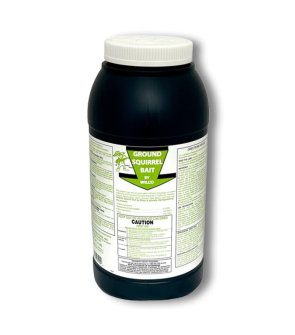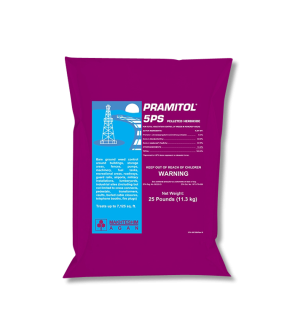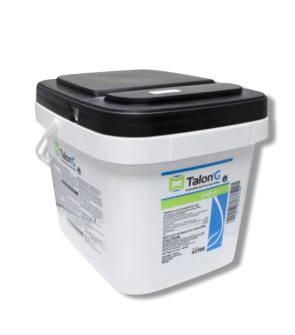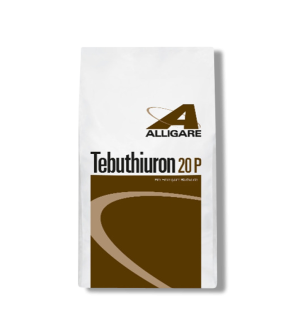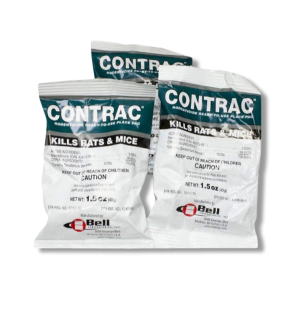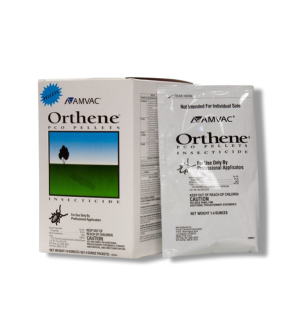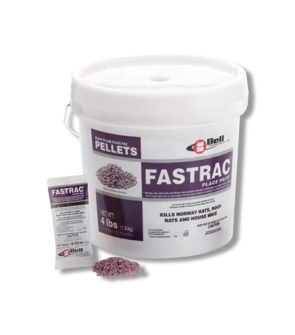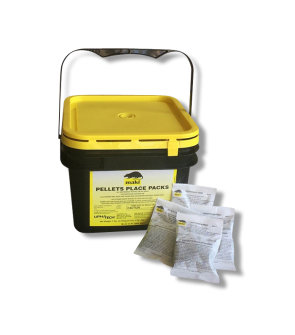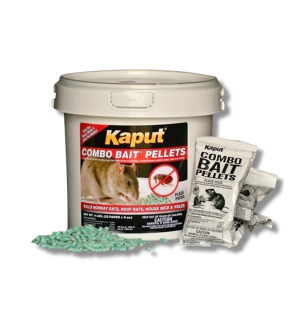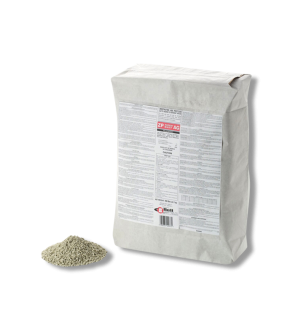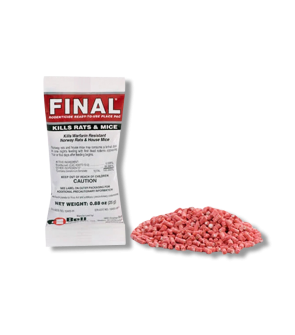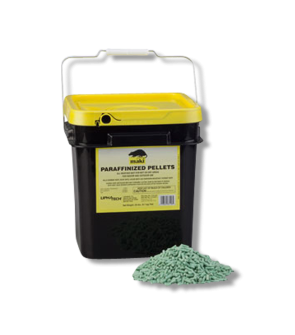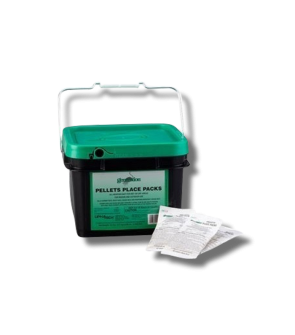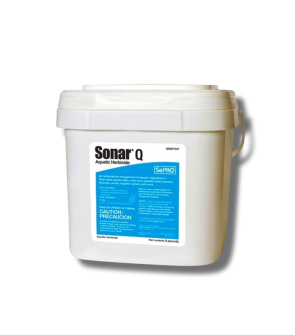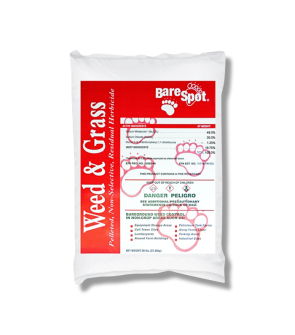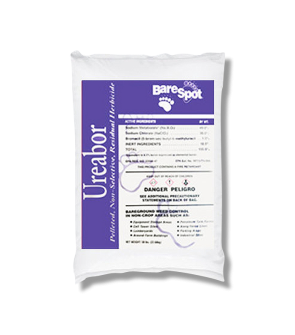Pellets
Pellets
Occasionally when dealing with a pest in a residence or commercial area, using conventional liquid pesticides may not work due to the pest developing a resistance. In such cases, the best kind of pesticide formulation to use may be a dry formulation such as an insecticide pellet.
Insecticide pellets have been known to work well in controlling ants, cockroaches, earwigs and other pests which commonly invade structures or camp out on lawns and turf.
On this page we will inform you about pellet pesticides, how the pellets are formulated, and how to properly use pellets to treat for pests. You can also browse and shop the best insecticide pellets formulations we carry at our Solutions Pest & Lawn stores.
What is an Insecticide Pellet?
A pesticide pellet is a formulation where instead of originally being in liquid form, the pesticide active ingredient is impregnated into an organic material and manufactured dry. Some materials or carriers used are sand, ground up clay, corn cob, walnut shells or some other dry, solid substance.
Most pellet formulations are very similar to granular insecticide formulations almost to the point where the terms often are used interchangeably. The key difference is that pellet formulations are usually larger in size and scope than granules and all the pellet particles are uniformly sized and have the same weight and shape.
The uniformity of the pellets makes it so that they can be applied with precision application equipment.
Pellets can either be scattered dry on a surface of turf, or they can be mixed with water to form a liquid solution which can be sprayed and contain a longer residual effect.
Conditions for Using Pesticide Pellets
Much like granules, pellet pesticides are most often used to apply chemicals to the soil to invading insect pests and controlling invasive species of weeds which are living in the soil or for absorption into plants through the roots. Pellet formulations are regularly used in agricultural, turf, aquatic, right-of-way and public health operations.
In agricultural settings, insecticide pellet formulations are often spread via air (airplane or helicopter) minimize drift or to penetrate dense vegetation. Once applied, pellets release the active ingredient slowly. Some types of pellets require the soil to be moist or for the product to be made wet to release the active ingredient contained within.
The most effective way to apply pellets to your yard is to use a seeder, lawn spreader or or hand-held spreader. In other cases, pellets are simply mixed in a sprayer tank with water and used to make a solution that should be sprayed. Once the granules have been spread out over the intended area, water should be applied in order to obtain the best results.
Benefits of Using Pellets
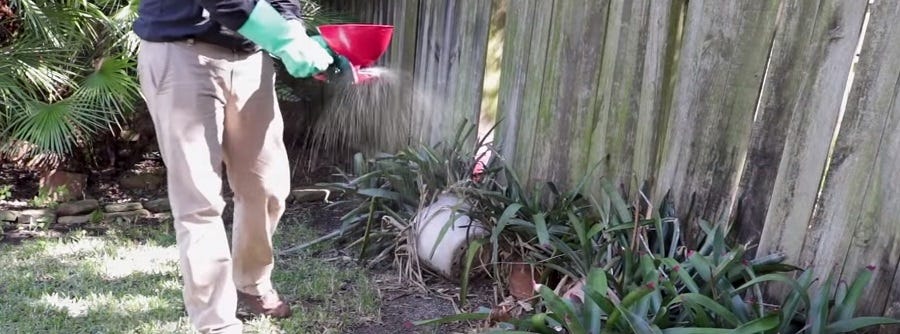
Pesticide pellets bring a lot of the benefits which granular insecticides have. In most cases, pellets come ready-to-use and no mixing is required. The potential of the product drifting where it shouldn’t and becoming a health hazard is low. The products tend to settle where they have been spread very quickly.
When utilizing an applicator (such as a pellet spreader) there is also little hazard. You don’t have to worry about spray in your face or inhaling dust because the pellet particles are larger and are less likely to be ingested or get in your eyes when spreading them around.
The weight of the pellet carries the formulation through foliage to soil or water target. There are no complicated products that are necessary to use when applying insecticide pellets as all you would need is either a seeder or fertilizer spreader or in the case that it’s a pellet that should be mixed with water, just a spray tank. The product also breaks down more slowly than wettable powders or emulsifiable concentrates because of a slow-release coating.
Pesticide Pellet Drawbacks
Pellets have a few disadvantages on some fronts. Pellets do not stick to foliage or uneven surfaces. On some lawns, pellets may need to be incorporated into the soil. Some versions of pellet pesticides also require moisture to activate the insecticide.
Insecticide pellets may be hazardous to non-target species such as waterfowl or other birds who will mistakenly feed on the pellet, believing it to be food.
Pellets also may not be effective under very dry or drought conditions because the active ingredient will not have the moisture to release in a sufficient quantity to control the target pest.
Tools Needed
Gather the necessary materials to apply the insecticide pellets. This includes: a granule spreader, safety gloves and the pesticide.
User Guide
Step 1: Check the Label
Read the label on the granule packaging to determine the proper usage and calculate the amount you need to use to ensure adequate control. Load your spreader or spray tank with the correct amount of pellets according to your treatment area and what the label indicates.
Step 2: Apply Pellets
Apply the pellets as a broadcast application across the desired treatment area. Overlap your pattern by 1-2 feet to ensure even coverage. Use a similar pattern that you would when mowing your lawn.If label requires, then wet the lawn down after applying the pellets so that the insecticide soaks into the soil for maximum impact and to activate the active ingredient.
Featured Products
Pesticide pellets can target a variety of issues on a property, not just insects. Below are some of what our experts have compiled as the best pesticide granules for a given situation.
Orthene PCO Pellets - Orthene PCO Pellets with acephate are one of the best ways to control german cockroaches in a commercial setting. As an organophosphate, Orthene PCO pellets have remained one of the few products that insecticide-resistant pests are still vulnerable to. They are commonly used in restaurants and commercial kitchens for german roach control. The pellets dissolve in water and come 10, 1.4 ounce packets in a box. Each packet makes one gallon of total solution.
Contrac Pellet Place Pacs Rodent Bait - Contrac Pellet Place Packs by Bell Labs are baited pellets in an easy to use place pack sachets. These fresh, contamination-free place packs are an exceptional way to control and kill rats and house mice in hard-to-reach locations. The active ingredient, Bromadiolone, has a highly tempting meal formulation that draw rodents to the bait and kills in a few days.
Pramitol 5PS Industrial Weed Killer - Pramitol 5PS is a granular pellet weed killer that acts as a ground sterilizer preventing weeds and grasses from growing for up to 1 year from application. The product is a weed killer pellet that can be applied with a spreader and then water activated to sterilize the soil. This product is commonly used in industrial sites such as plants, rail yards, storage facilities, pipelines, roads, and construction sites to kill weeds and grasses.
Key Takeaways
- Pesticide pellets are a formulation where the pesticide is impregnated in organic material such as sand, clay, or some other dried substance that can be spread. They are like granules but larger in size.
- Most granules are activated once that become wet and are known to have a long residual effect where applied.
- It's best to use a broadcast or hand spreader when applying pesticide granules to ensure you get even coverage in an area.

